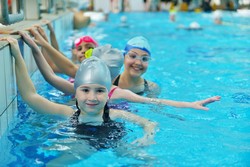A sensor to detect and degrade cyanuric acid in swimming pools
Microorganisms in swimming pool water can pose a serious health threat, and pool disinfection is therefore compulsory by law in many countries. CYA stabilises HOCl and is added to pool water to slow down its degradation, but CYA itself does not degrade. The CYA concentration therefore rises steadily over time and at high CYA levels, chlorine is overstabilised and unable to act as a disinfectant. The EU-funded POOLSAFE(opens in new window) (A novel swimming pool water treatment for the detection and elimination of excess cyanuric acid) initiative was launched to provide an effective and efficient solution to the CYA problem. The team worked to develop a soft sensor to monitor the levels of CYA and a cost-effective method for degrading excess CYA using photocatalysis. POOLSAFE constructed a lab-scale system to mimic the conditions of a swimming pool and used a multi-sensor to observe pH, temperature, conductivity and other parameters. The researchers also performed experiments using the multi-sensor in real swimming pool samples with different concentrations of CYA. Project partners then used the data to develop models to correlate the online measurements from different water samples with their respective CYA concentration. They tried different catalysts to degrade CYA as well as many sensor designs. The researchers installed the POOLSAFE prototype (composed of a photoreactor and sensing system) in a children's pool due to the smaller volume of water it contains. They evaluated the performance of this prototype first without users and once the swimming pool was opened to the public. Using the POOLSAFE system, the researchers estimated 70 % water savings and up to 60 % savings in disinfectant products. POOLSAFE outcomes will reduce the environmental impact of swimming pool maintenance by eliminating the need to periodically replace the pool water. This will provide improved safety to bathers by ensuring that chlorine overstabilisation and the subsequent lack of sanitation is prevented.







